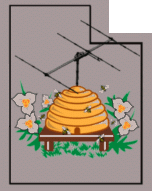
The "DSP Noise reduction" "Notch2", "High Boost",
"Vari-Notch", "CW Peak" and Synchronous AM features
 |
Northern
Utah WebSDR The "DSP Noise reduction" "Notch2", "High Boost", "Vari-Notch", "CW Peak" and Synchronous AM features |
|
"Autonotch"
is now "Notch1"
The filter that had been labeled "Autonotch" is now "Notch1". Unlike the new "Notch2" filter, this "Notch1" filter operates on the server side of the signal path and its operation can reduce the strength of strong CW notes (carriers) and reduce the S-meter deflection and prevent AGC action on that signal. Unfortunately the original "Autonotch" notch filter (a.k.a. "Notch1") is susceptible to other strong signals meaning that it can be prone to "hunting" in the presence of strong modulation - and with weaker signals, it may not reliably "lock" on CW notes at all. |
|
"I reloaded the page, but DSP noise reduction (or related option) suddenly isn't working"
There's a quirk related to the "tick" boxes and drop-down settings on the WebSDR - and other similar boxes on other web pages and that is that if you reload or refresh the web page, the boxes or selections may look as though they are active, but they will not be. For example: If you were to select a DSP setting of Low, the DSP noise reduction would start working - but if you refreshed the page, it may still show that selection, but the DSP noise reduction would not be active. The work-around is to select Off (or any other setting than the current one) and then select Low again to reinstate the filter. This same quirk applies to practically every option on the WebSDR page from the frequency to the waterfall setting to the volume setting - and everything in between. This is not a bug per-se, but just the way the HTML/Javascript that is being used works. |